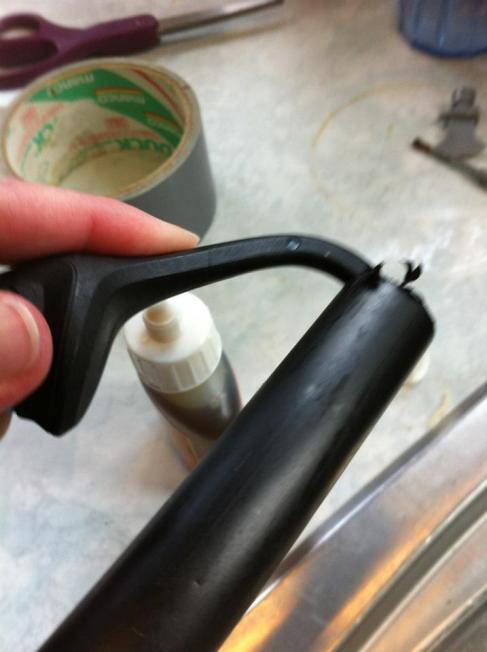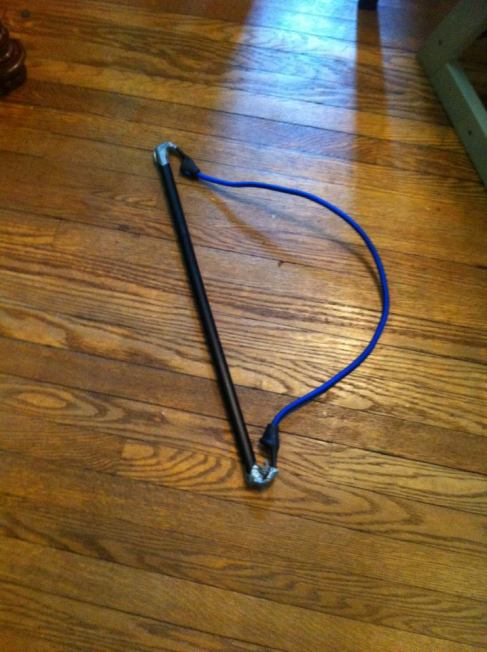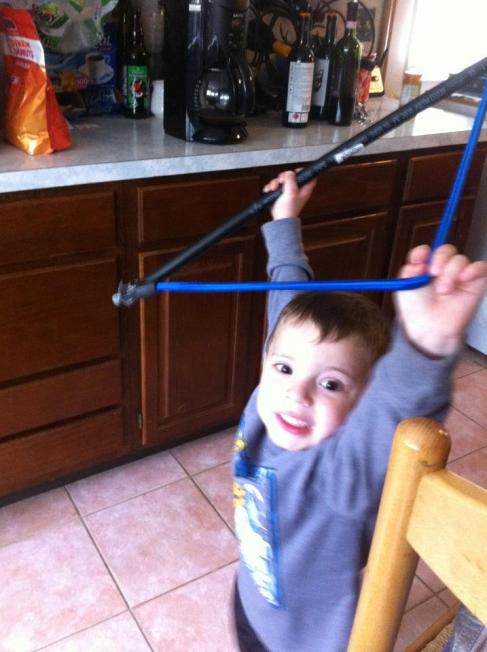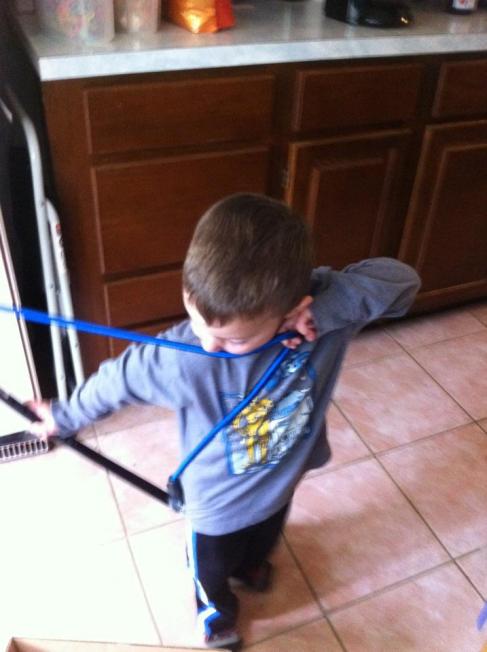Over the last year, the Internet has spewed righteous indignation over pink toys, shirts decrying being too pretty for homework, boys in clothing catalogs wearing nail polish, boys dressing up as Daphne from Scooby Doo for Halloween, and, if I may insert a bit of personal commentary, the ugliest little Lego figures I’ve ever seen. Yeah, Friends. I’m talking about you there. I’m sorry – you’re not minifigs and have the weirdest cartoonish proportions I’ve seen in a long time. I hate to sound all Mean Girl about the way another girl looks, but you, Friends, are some mighty ugly little toys. There. I said it. And, y’know, it felt good.
The gender discussion has become one in which both sides feel they are being treated unequally. Girls don’t like certain toys because the toys don’t focus on their interests. Boys feel uncomfortable with all the pink they see in stores and their inability to identify with a favorite female character. Little girls are still made fun of for loving Star Wars. Little boys are outcast for modeling their behavior on their mothers’ behavior. These societal designations are further dividing a new generation of child while parents are forced to figure out how to negotiate the intricate morass of self-identification, trying to allow their children to be themselves while recognizing that their children often understand that not everyone is as accepting as their parents. In seeking gender equality and equal access to self-identification, the overarching media argument ignores an issue greater than social acceptance – literacy.
Literacy in this country has become ensconced in gender. Education has become ensconced in gender. Whether these are conscious reactions to women’s ongoing fight for equal education and workforce representation or an unconscious assumption based on gender interests, American children as a whole are losing in this fight. The education gap in this country is not just one based on economic status but on sex. The data surrounding education contains frightening statistics. Many of these stem from institutional issues, such as the requirement that children sit quietly in order to absorb information necessary to excel on tests under NCLB. Boys tend to be more kinesthetic than girls and so these sit quietly requirements cause them to fail socially in the classroom leading to academic failure. However, one of the most frightening statistics is that “For every 100 tenth grade girls who read for pleasure one or more hours per day 81 boys read for pleasure one or more hours per day.” Reading for pleasure is the key to engaging all children – boys and girls – in the lifelong process of learning, whether in a school or on their own. Joy of reading is not linked to an X or Y chromosome, at least science hasn’t proven that yet. So, then, why are boys 19% less likely to read than girls?
This question, and many observations in my local library, led to some startling research. Starting with the counter argument, a study published in 2011 argued that there was a gender gap in books published between 1900 and 2000, with a majority of the main characters being female. Although this study indicated that the gender disparity nearly disappeared by 1990, “with a ration of 0.9 to 1 for child characters and 1.2 to 1 for adult characters, it remained for animal characters, with a “significant disparity” of nearly two to one” (see linked article). Of course, the main logical issue here is the longitudinal nature of the study. Female literacy levels were lower than male levels until the mid-20th century. If you talk to librarians or those in the publishing industry today, books that appeal to boys are harder to find than books that appeal to girls. Jon Scieszka, children’s book author and teacher, addresses these issues on his website Guys Read. Scieszka advocates several points to engage boys in reading, including:
2. Expand our definition of reading.
Include boy-friendly nonfiction, humor, comics, graphic novels, action-adventure, magazines, websites, audiobooks, and newspapers in school reading. Let boys know that all these materials count as reading.
3. Give boys choice.
Motivate guys to want to read by letting them choose texts they will enjoy. Find out what they want. Let them choose from a new, wider range of reading.
Children tend to like characters with whom they can identify or stories they can recreate in their heads placing themselves in the story. With this in mind, I engaged in some research and discussions with the main branch of my local library. Controlling for the Juvenile literature category and Book format, I ran a search of the local library system based on characters that tend to be popular with boys and girls in the preschool – mid-elementary school age ranges. Granted, the characters searched are based on personal anecdata – conversations with kids, my own kid, listening to other parents talk about books their children read and love. The local library catalog has 15 Superman books, 14 Batman books (although some appeared to be repeats from the Superman search), and 1 Ironman book. They do have a huge collection of Star Wars (26 by search). Conversely, they have 29 Fancy Nancy books, 29 American Girl books (these were just the ones that are the spin offs, not the original girls and not all originals were located in the search), and 16 Eloise books. Further research indicated that there are 25 Dora books and 6 Diego books in the catalog. This is approximately a 1:4 ratio of the available boy:girl oriented books, although admittedly a lot of boys like Dora. On Amazon, 705 Dora books are available and 253 Diego books are available. This means that there is a 1:3 ratio of available boy oriented books. These disparities are one of the keys to the literacy problem. No, books should not be gendered. Action heroes should not be considered soley for boys nor should Fancy Nancy be considered solely for girls. Little girls should be encouraged to conquer the world with their super powers or their ability to manufacture robotic bodies. Little boys should be encouraged to dress themselves up to feel special or have tea parties. It’s not about keeping kids from reading books within their interests; it’s about making sure that all interests are equally represented.
Boys and girls think and act differently, for the most part. Go to a playground and watch children generally unencumbered by social norms play. Boys are more likely to throw sand and mulch. Girls are more likely to want to swing in the swings. Boys tend to pick up sticks and battle with them more, even at younger ages before social stigmas and beliefs can drain them of their natural impulses. Yes, there are calm boys sitting in the sandbox. There are girls throwing sticks like nunchucks. It’s not universal, and it would be reductive of me to argue that it is. As the tree climbing, superhero loving, daredevil girl, I would never do that. However, I will also say that my behavior was often not considered appropriate for my sex and that there were few girls in my elementary school who chose She-Ra or Transformers over Barbie and babies. We can argue that there are no differences between the sexes. However, for those arguments, I suggest watching a playground of one year olds play. The boys are more likely, though not exclusively, climbing up the slides and running screaming around the playground. The girls are more likely, though not exclusively, sliding down the slides and playing more sedately (though, as one year old are wont not always neatly) in the sandbox or on the swings. Denying these differences denies equal treatment of those who do not fall into the generalities.
What about the little girl who dreams of being a superhero? If books about superheros are considered less worthy, is that little girl being forced to sit on the sideline? Is she losing engagement in reading? Yes. However, if a little boy is interested in braiding a turtle’s ears or write with a pen with a plume, there’s a character for him. Those boys have the resources. Those girls don’t have the resources. Assuming that one set of characters or one set of plot lines is more appropriate for readers than another assumes that there is a “right” way to read.
By limiting what’s available to boys, we are limiting what is available to all children. The interests of equality are not served if those who identify with a certain gender feel left out. If we dismiss graphic novels or comic books or action oriented plot lines, we are not just disfranchising boys from reading but girls who may be interested. The goal of any library should be gaining readers. Perhaps boys buy fewer books because the books available are not interesting. As a female, I would not want to have access to 29 Fancy Nancy books and only 1 Ironman book. Ironman built his own superhero armor for goodness sake. If that’s not the ultimate in accessorizing, I don’t know what is. These books appeal to all children, regardless of sex. However, by genderizing literacy, boys find themselves less engaged and girls who identify with masculine imagery feel even further left out of the culture. This genderizing of literacy goes beyond harming boys alone. It harms all kids who identify with imagery or literary styles that do not match the societal literary norm of “feminine.”
Availability can be nullified, in part, by accessibility. In my local library, there is a Guys Read section. I love this. I love that there are books that are available with masculine themes and characters displayed. If the availability of these books is low, then the accessibility needs to be addressed. However, simultaneously, there is a wall of American Girls books as well as a Girls’ Books section to match the Guys Read section. Again, in theory, there should be none of these at all. At the end of the day, however, when the feminine themed books are more available, the accessibility can make up for that. Maybe a library cannot locate enough masculine themed books to match the feminine themed books. However, when availability means that there are more feminine books on the shelves, then making masculine themed books accessible needs to become a priority. If a child walks to the stacks, browses the books, and for every four books finds one of interest, that child becomes discouraged, especially with not-so-focused preschoolers. If numerically, there is less of one theme in a collection, then the way to balance that out is to make that theme easier to locate. Basic logic applies to this. No, it shouldn’t be that “boys” have more things handed to them. It should be that all children interested in these themes, generally considered masculine but not always male, should have equal access to these themes. Assuming that children who can’t read on their own will undertake detailed searches and seek out books that interest them when those books are fewer in number and more difficult to locate is illogical and insulting.
Our gender oriented society is hurting the literacy of our children. Empowerment for all should be the goal. Empowering girls who love dressing up in tutus and feathers is considered socially acceptable. Encouraging boys with the same interests makes them outcasts. Encouraging boys interested in superheros or MMA is considered borderline acceptable. Empowering girls with the same interests is generally considered radical. The goal of literacy should be encouraging early reading, regardless of thematic quality. When young children read, they become hooked on its power and magic. They become their own intellectual superheroes. Society, publishers, teachers, librarians, and parents should be raising a generation of intellectual superheroes, when in reality they are forcing children into sex and gendered boxes keeping them mentally and emotionally caged. All children should be encouraged to dress up – whether it’s all kinds of fancy or with capes and masks. Intellectual curiosity is dying with our current generations. Enabling early reading through medium unencumbered by adult prejudices is the only solution. Readers Assemble!

















